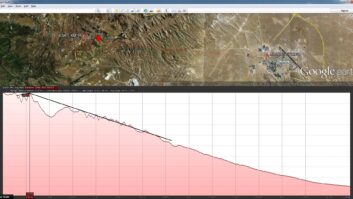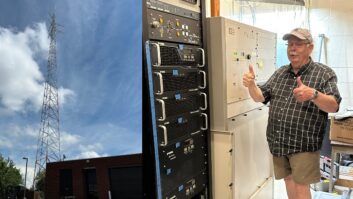We Conclude Our Series of Questions and Answers With Leading FM Consultants
How can you get the most out of your FM antenna system? To provide some insight into this subject, three prominent broadcast consulting firms were asked to respond to 15 topics about FM antenna performance. With this issue, we conclude their replies. Past articles are available at www.rwonline.com under the tab “Better FM Coverage.”
The participants are Ben Dawson of Hatfield & Dawson; Bob Culver of Lohnes & Culver; and Don Markley of D.L. Markley & Associates. Note that any consultant would need specific site and application information to provide an accurate recommendation for a given situation.
Topic: Comment on building penetration issues that confront you as a consultant.
Dawson: We make a lot of building penetration measurements at land mobile frequencies where talk-in can be particularly critical because of the limited power budget. For broadcast FM we have some pretty valid assumptions we normally use, based originally on measurements.
Culver: A dB is still a dB and building penetration is just the ratio of the signal impinging on the building to that inside, just a dB ratio. Add 3 dB outside and everything inside goes up by 3 dB too.
Now if you are concerned about multipath, if the antenna does not change and the propagation path(s) do not change, then a dB is still a dB. If you happen to be on the threshold of service, on the edge of the FM signal-to-noise curve, 3 dB outside could sound like a lot more inside, you are in the area of non-linear audio performance vs. RF signal.
Look at any receiver performance curves. It may be that with more (or less) power, the audibility of an artifact, multipath included, is masked. But, if you change the power up and down, the multipath effects will stay the same, you will have the same direct and reflected signal ratios and phases.
You probably could do a lot better to improve audio at the threshold of service by turning off the stereo. That is worth about 23 dB SNR.
Markley: For best building penetration, we suggest the highest possible ERP as opposed to adding height greater than that assigned to the class of station and then decreasing power as needed to comply with the rules and the maximum distance to the protected contour.
Topic: What is the best choice of antenna polarization for various types of terrain and urban environments (H only, V only, elliptical, circular)?
Dawson: There may be circumstances where plane polarized antennas are more desirable, but if there are, we haven’t found any. CP and mixed polarization are very satisfactory.
Culver: As I recall, H-pol has a bit of an advantage because of less reflections. But today we have a lot of vertical (or at least slanted) antennas on cars, so the vertical component is a help.
You want the real answer to improved performance? Diversity receive antennas. But then I’m not answering this for the transmission antenna folks.
When we discussed this with the folks from one of the big two auto manufacturers, all these topics were discussed. The auto folks said, “Yes, but that costs money, and beside the antennas look bad and make noise. Isn’t there any way to have good audio performance without the antennas?”
My answer was, “Yes, throw away the antennas and the radio and just put in cassette players.” That was in the days before automobile CDs.
Markley: We fully believe that circular polarization is the best for all FM service with a single station. In some cases where boosters are to be used, we have had significant success using horizontal polarization for the main station with vertical polarization for the booster signal.
Topic: Comment on the importance of axial ratio in a circularly polarized antenna. This would address parity of the radiated waves in all polarization planes, not just H&V.
Dawson: If receiving antennas were CP, this would matter, but since they are generally randomly linearly polarized, it appears to be relatively unimportant.
Culver: Interesting question. Any side-mounted antenna that has different H-pol and V-pol azimuth patterns will have a big axial ratio all around the pattern, except where the two fields were the same. Just like the broken watch, at least it is right twice a day (and the axial ratio is near zero at two or more points but not many).
The only inherently low axial ratio antennas I know about are panel antennas, and the best of these is the CBR. The reason for this is that the radiating element is the round cavity and it is identical for all polarizations over its azimuth and vertical patterns (at least to the symmetricity of its cavity shape).
But does the axial ratio mean much? It would if you had a C-pol receiver antenna and wanted to reject reflected (reversed polarity) signals.
Markley: We suggest fully circular polarization, not vertical and horizontal. In other words, we prefer the field to be the same for all angles of antenna field rotation.
Topic: Comment on placing the antenna on a short tower close to the city of license vs. on a tall tower further away.
Culver: Trade-offs! Do you really want to put a 100 kW FM station in a populous area and deal with the RF exposure zoning concerns that will come crawling out of the woodwork?
Then there is the issue of FM blanketing. You will have to deal with all of the complaints for the next year from anyone within a few miles and if there are 10,000 people in that area and they get on your case, you will be busy.
I would much prefer to build a tall tower (or lease space) about 10 miles out, where land may be cheaper, people are fewer and perhaps not so feisty, and still put 90+ dBu in the city, 20 dB above principal community coverage, than to put 20 dB more in the city (and thereby have 40 dB more signal above superior service than just 20 dB above that level).
Markley: To evaluate the problem of tall tower with lower ERP and short tower with full ERP, it must be assumed that, in each case, the maximum facilities for the class of station are used. Then this becomes a judgment call.
In open areas with numerous small communities to be served, greater height is desirable. However, if the desired market is a single major city and service at a greater distance is a secondary goal, the greatest ERP is desirable to penetrate buildings as much as possible.
In any case, continuing to increase height seems to be something to be done with caution. You shouldn’t just keep going until the ERP becomes something like 100 watts. That would be great for communicating with planes, but poor to get into even a house.
Radio World thanks the consultants who participated in this series of questions and answers.












